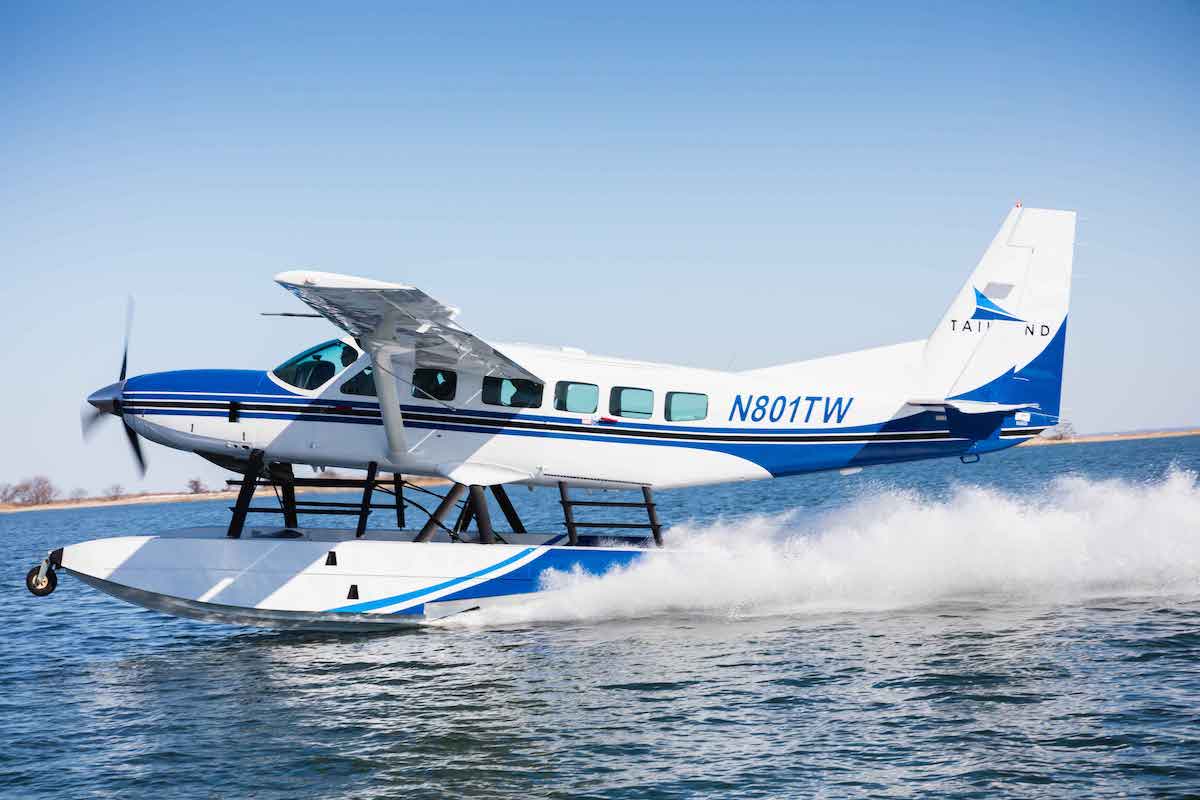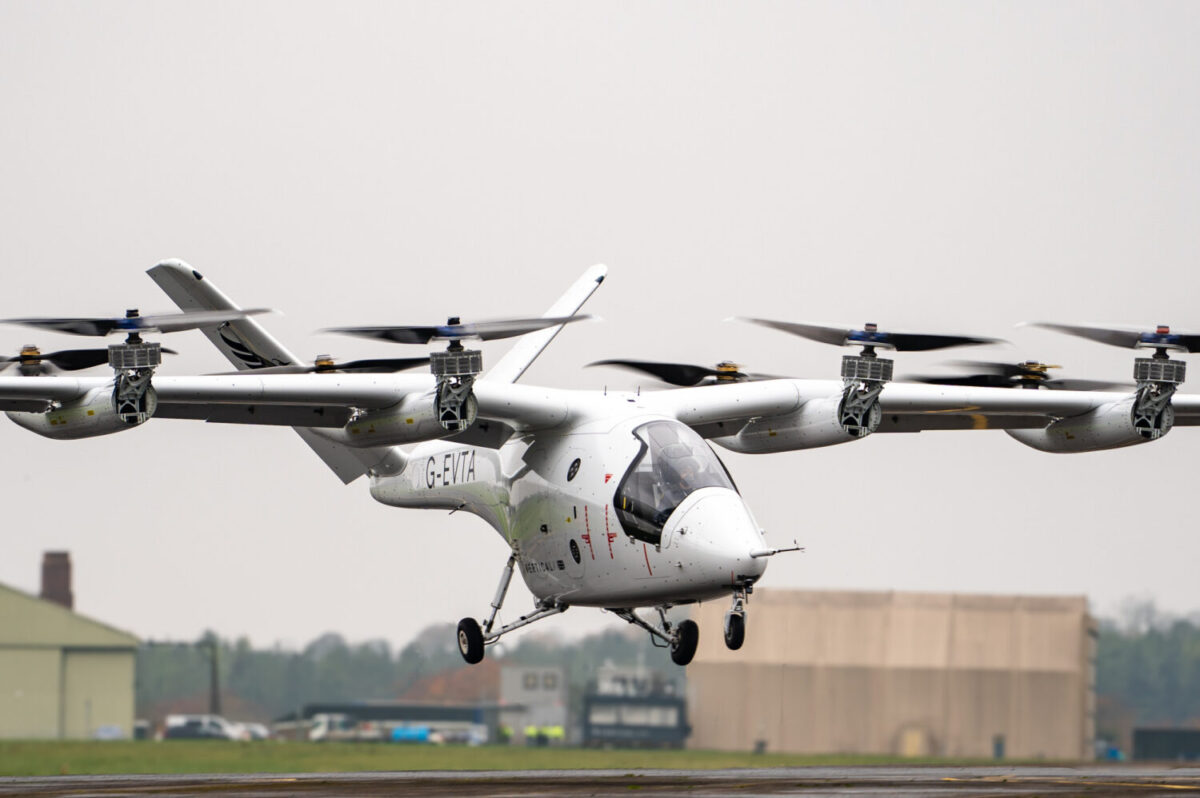Proposed Seaplane New York-Washington Flights Face Streep Hurdles

Skift Take
If Amtrak’s Acela, three air shuttles, and Interstate 95 were not enough options to get travelers between New York and Washington, D.C., there is a proposal for one more. Seaplane operator Tailwind Air wants to add waterfront-to-waterfront flights to the fray as soon as September.
While details are scant, Tailwind unveiled plans on April 29 for the seaplane flights between New York and Washington, D.C., from September 7 “subject to approval,” a map from the airline stated. Tailwind declined to provide additional details of the proposed service, including flight time or where they would arrive and depart in D.C.
The argument for Tailwind’s proposal would likely be the same as the one it uses for its New York-Boston seaplane flights. Travelers arrive and depart from waterfront piers close to the centers of both cities where they are able to save time by skipping trips to and from airports, as well as beating airport crowds and skipping lengthy security queues. David Slotnick, a reporter for The Points Guy who took one of Tailwind’s flights last year, described it as feeling “like flying private.”
Flights to Washington’s waterfront are technically feasible. The city has a lengthy riverfront bounded by the Potomac River and its less famous sibling the Anacostia River. There are at least three major active marinas in D.C., including ones in Georgetown and at The Wharf — a new development two miles south of the White House on an inlet from the Potomac known as the Washington Channel. Further south on the Potomac are marinas in Alexandria on the Virginia side of the river, and National Harbor on the Maryland side.
But it’s the “subject to approval” bit is the problem. A spokesperson for the U.S. Federal Aviation Administration (FAA) said that an operator would need approval through the DCA Access Standard Security Program, which was put in place after the 9/11 terrorist attacks in 2001 to maintain security aboard general aviation flights into and out of Washington’s Reagan National Airport. The rules require that each passenger be vetted and screened by the U.S. Transportation Security Administration (TSA) at a specified gateway airport before the flight. Commercial flights into and out of National airport are exempt. The FAA also maintains a 15-mile restricted zone around National airport that includes all of D.C.’s waterfront.
Passengers on Tailwind flights, which depart New York from a base on the east side of Manhattan at 23rd Street, do not clear TSA security. And the seaplane base is not one of the gateway airports listed by the TSA.
“At this time we are still working on our D.C. expansion and are not ready to announce a route launch,” Tailwind co-founder and Director of Scheduled Services Peter Manice said in a statement. “We do feel we have a pathway to D.C. area service that will afford similar benefits to the ones our Boston-Manhattan passengers realize on a daily basis.”
Manice declined to comment on the FAA’s statement.
If the FAA were to sign off, Tailwind would still need approvals from a maze of local and federal authorities. The city of Washington controls the waters of both the Anacostia and Potomac along its shores, though the U.S. Coast Guard has some jurisdiction, and the TSA oversees security.
A TSA spokesperson said only that the agency’s general aviation authorities have not reviewed a proposal from Tailwind.
A Coast Guard spokesperson said that, once Tailwind receives FAA sign off, its role would be to “minimize hazards for navigation and mariner safety risks.”
D.C. officials were not immediately available to comment.
Before 9/11, several entrepreneurs dreamed of waterfront flights to D.C. Former Downtown Airlines was one of the few to actually realize this dream with its own New York-Washington seaplane flights in 1974, according to The Washington Post archives. However, even with no 9/11 security concerns, it took the airline more than five years to gain all the needed approvals for flights. Downtown Airlines shut down shortly after service began. More recently, a 1985 proposal for a seaplane landing strip in the Washington Channel off the Potomac died after waiting more than two years for regulatory approvals.
One federal official, who was not authorized to speak on the record, said that if the FAA signed off on Tailwind’s proposal, the airline would likely have to land further south on the Potomac — in other words not in D.C. itself. They named National Harbor in Maryland, which is an at least 15-minute drive from the U.S. Capitol, as a possible D.C.-area terminal.
But landing a 15 minute drive from the District would kill Tailwind’s competitive edge: convenience.
CORRECTION: An earlier version of this story stated that the FAA would not allow an operator “to land on the water in the National Capital Region“ based on what the FAA now says was erroneous information on its part.




